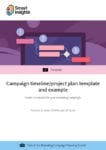Structure your next big campaign using the RACE planning framework
Have you got an up-to-date campaign planning process?
Ad hoc campaigns or those that re-use old approaches from previous campaigns that have been successful can be the time-saver you need to get a new campaign up and running. Here at Smart Insights, we are victims of this type of planning too and sometimes fall prey to the “this worked in the past, therefore it will work now” approach. But, every campaign needs to be unique, individual and well thought out and make use of messaging, segmentation targeting and correct timing that takes into account external factors.
Without understanding the wider PESTLE issues before planning a campaign, you could target the wrong audience with the incorrect messaging, which could cause offense. Timing is everything.
The RACE planning framework is designed to help members and marketers refresh their existing approach in order to integrate all techniques into one plan, which works together to grow brand awareness, increase sales, or improve lead generation depending on the campaign goals.
What is RACE?
RACE, or (p)RACE, is a four to five step process that helps integrate all marketing communications into one easy-to-understand campaign plan, with the knowledge of how all planning and media scheduling fits together to deliver a well-executed campaign that targets the correct audience, at the right time with the right message.
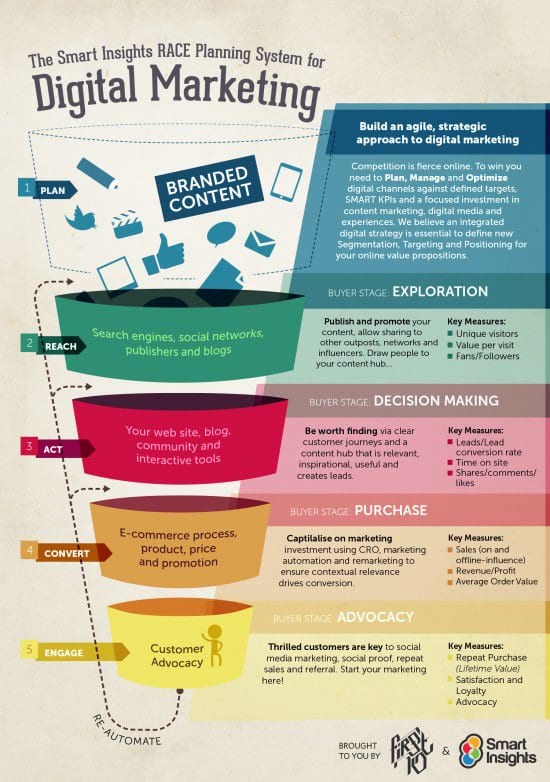
1. Plan
Any campaign needs to start with a plan. But what goes into it?
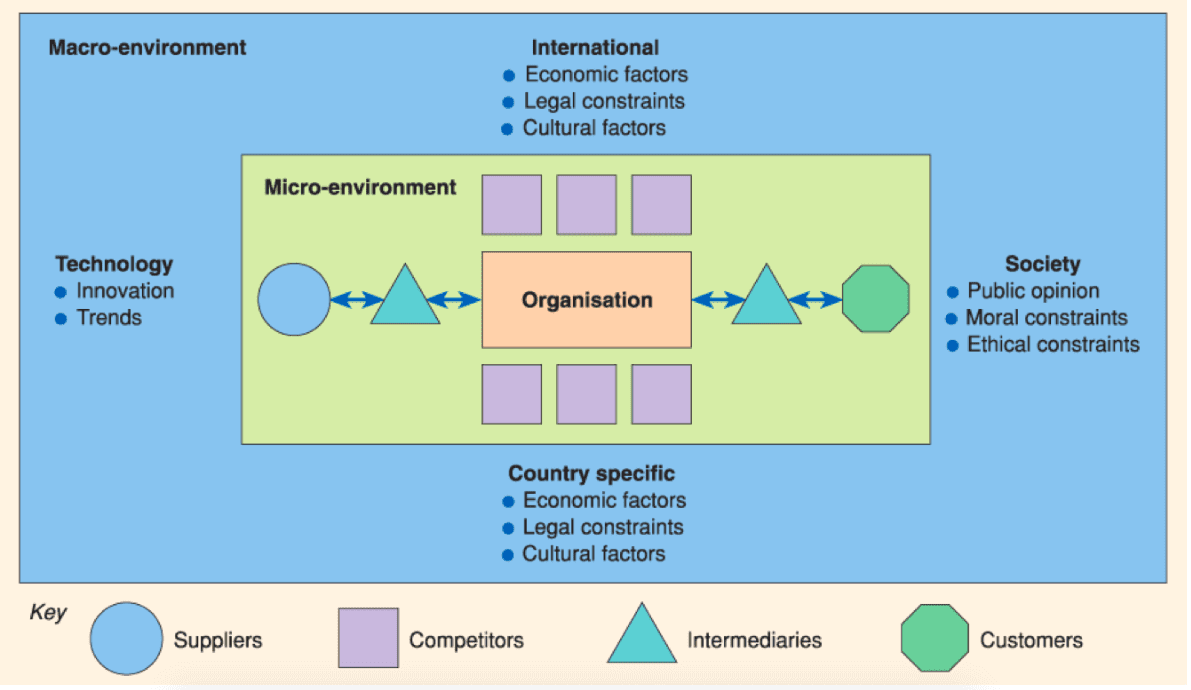
1. Goals and objectives
Make sure these are attainable and SMART.
2. Online market place analysis
This is essential for any business before creating a promotional campaign. Many businesses will already know their competitors and their marketplace, but this needs to monitor and updated regularly as new customers and competitors change their wider strategy. Agencies in charge of planning and running a campaign for a client need to carry out marketplace analysis before any communications strategy is conducted. Understanding how your target audiences use media means you can have timely conversations with them about the topics they’re interested in in the right online spaces.
3. Target Audience and audience motivations
How can you develop a campaign if you’re not sure who your target audience is? You might already have a target audience which you have analyzed from your database, but how do you envision segmenting your audience into smaller groups of potential customers with the right messaging? One social post, TV ad, a piece of content etc. might engage one segment of your target audience but what about the rest? Understanding your consumer/audience motivations for wanting or needing a problem for a problem they face is needed in order to provide an educated and inspiring answer that encourages interaction with your brand and purchase.
4. Competitor analysis
Knowing what your competitors are doing well and not so well will help you direct your campaign messaging the right way. When carrying out competitor analysis review and compare up to five and consider:
- Do they use landing pages?
- How often are these updated?
- What messages are used?
- Which social media channels do they use most?
- What are the key messages used via social media (advice, information, inspiration, promotion)?
- Are there dedicated phone numbers to call?
- What are the calls to action?
- What are the core value propositions?
- Any incentives?
- What works well?
- Wat doesn’t work?
Here are some examples of big brands that have tried to target trending cultural issues with their campaigns, but lack of understanding of the concept, their audience or not getting the messaging quite right have to lead to national outrage.
Dove – Racist campaign
Dove’s campaign depicting a woman of color taking off her shirt to reveal a white woman caused a lot of controversy around the image of black women. Many stated that it showed women of colour as dirty, however, the actor released a video of herself saying she was disappointed people had thought of the campaign this way. It was shortly removed from Dove’s Facebook page.
Avon – body shaming women
With the growing social following of the body positivity community, it’s hard-hitting for women to see, via beauty and cosmetic companies, that they aren’t perfect and something natural like cellulite should be hidden via their products. Avon soon apologized for not getting their messaging right.
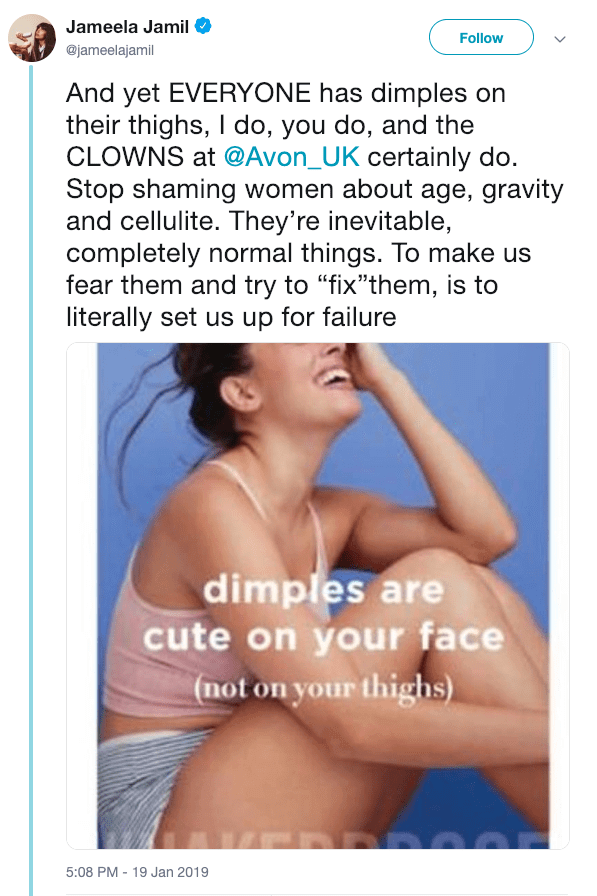
HSBC – Anti-Brexit
Although there hasn’t been too much conversation about HSBC’s new “together we thrive” campaign, many critics believe it’s a dig at the Brexit plan in the UK. Not explicitly saying it’s anti-Brexit, it’s messaging about being more than an Island and the timing of the campaign as the UK hit critical debates about the Brexit deadline is somewhat miss-timed.
You need to conduct a PESTLE analysis before any campaign – understand the economy and any issues that might affect purchase or engagement, but centering a campaign around a social issue to sell products is probably not a great idea. Remember, understand what your objectives are, who your target audience is, research competitors and know your audience motivations for buying.
2. Reach
Now it’s time to think about your media plan and schedule. We prefer using a visual timeline or Gantt chart in order to see when media communications are scheduled and who is responsible for setting them live.
Different types are communications are needed in order to improve reach and cut-through with campaign reach, including:
- Repeated communications – How many times will the channel you’ve selected repeat the same message to reach different people at different times? On a single channel like TV, the frequency should be capped at four whereas social media messages can be repeated as many as seven times in order to maximize the number of people who see it at different times depending when they’re online.
- Different touch point communications – Using just one channel (unless research and thorough planning have shown it’s best) is not the ideal way to reach potential customers. Many online consumers visit different sites in one browsing session, swap between desktop, mobile, and tablet browsing, and are online at different times. Mapping out a customer journey plan, understanding how you can repeatedly get in front of your audience at the right time. However, too many communications can sometimes be off-putting for certain demographics or cultures as people are becoming more aware of their digital footprint and online privacy.
- Campaign content and offers – How can you sustain your campaign with different creative and content? If you’re running a long campaign stretching across many months, your audience won’t want to see the same images and content being used. Re-engage them with different pieces of content.
- Drive offline media-to-digital response – Consider how you drive your audience from offline media to digital channels to encourage participation and sharing.
You also need to consider budget within this section. Does one channel need a higher budget? Do you need to invest in analytics software to help review results and understand how your campaign is performing?
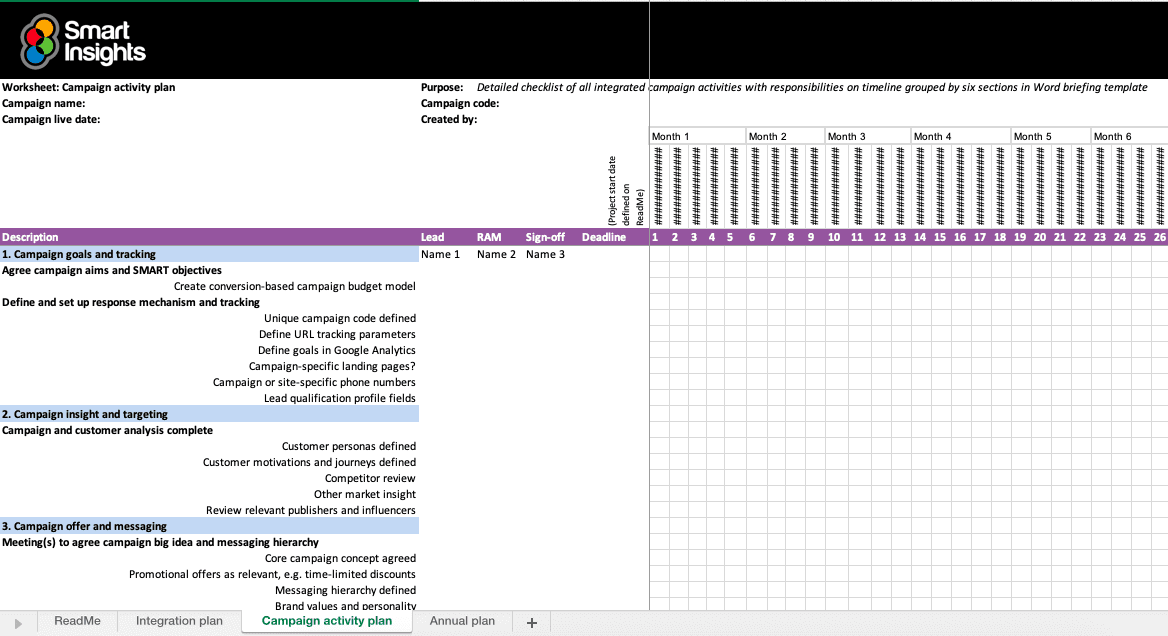
3. Act (interAct)
How will your target audience interact with your brand or participate in the discussion?
What types of content have will get your audience talking and interacting with? Think specifically about what works well with your audience, including:
- Infographics
- Written guides and PDFs
- Games
- Videos
- Quizzes and interactive tests
Take a look at the Smart Insights Content Matrix to choose the type of content that’s best to use depending on your goals – but remember your audience.
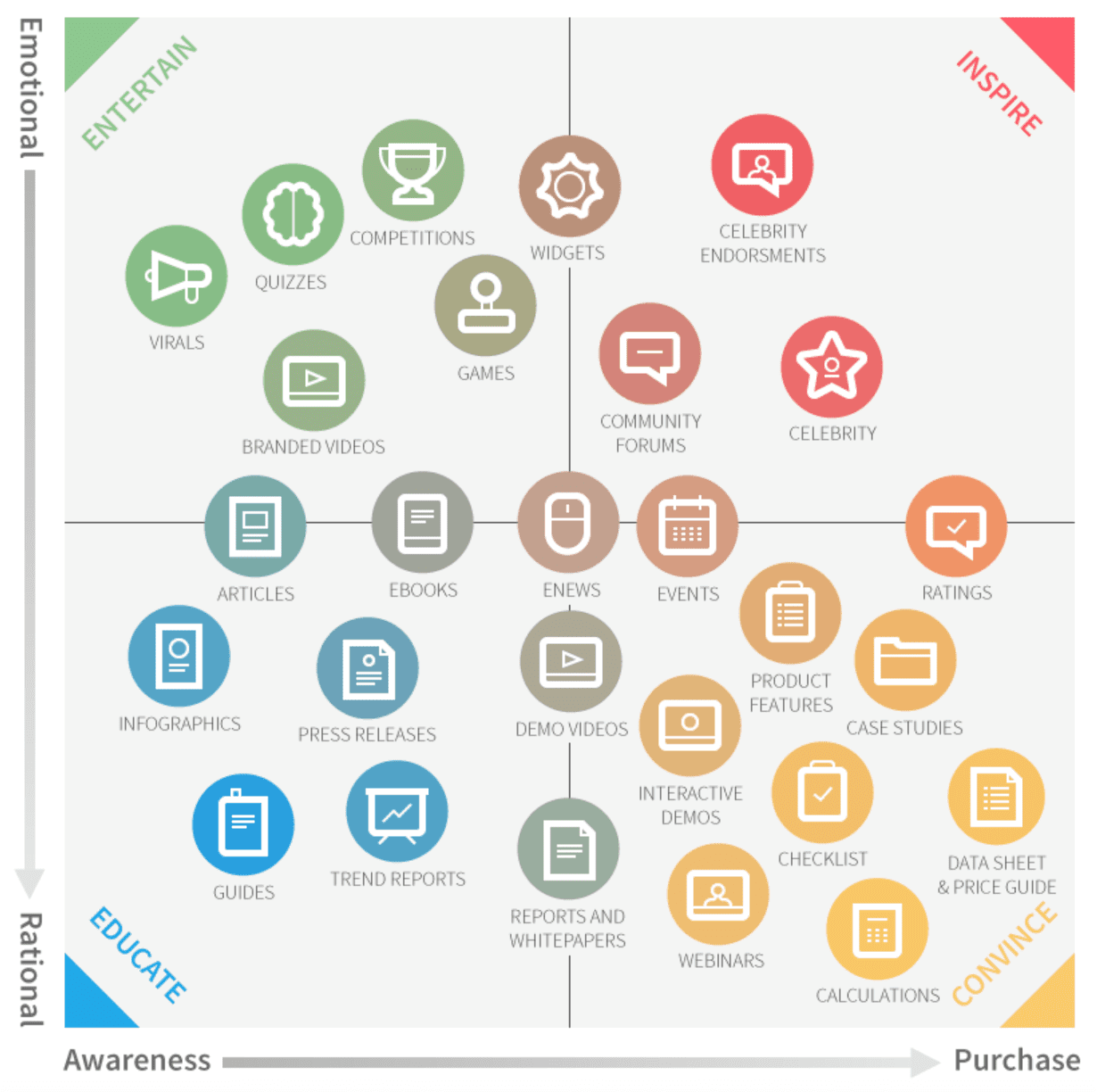
4. Convert
It’s time to start thinking conversion.
Have you landing pages been checked? Do they need updating? Are they accessible and readable?
One of the best marketing theories I have come across for web optimization is the common sense approach or the “don’t make me think” theory by Steve Krug. Is the page you’re directing traffic too clear, concise and easy to understand? Is the navigation simple to use so your users “don’t need to think”? Complex web pages and confusing navigation systems frustrate users who can’t find the information they need or make the purchase they want, quick enough.
Pre-live testing
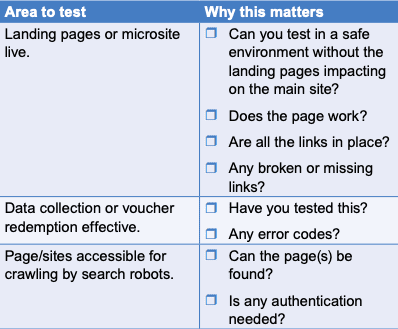
Constant monitoring is needed so you can be agile to changes that are needed. If your campaign isn’t reaching as many people online as you had anticipated, have you got a contingency plan and the budget to increase your ads? Is the target percentage of users converting on your landing page? Do you need to make last-minute changes?
You always need to be ready to make additional improvements to campaigns when live depending on the reception of your campaign. Optimize your campaign by rotating assets to see which perform better, does your audience respond positively to videos, images or text-heavy posts? A/B test campaign pages to see if improvements can be made – remember to change just one thing to measure its impact. Is there a specific time of the day that works better? Consider changing a percentage of your updates/posts to that time in order to reach your audience.
5. Engage
To improve reach further than your original first-degree media investments, campaigns need to be engaging enough that they encourage, or promote customer advocacy and sharing online with their connections. If you’re running a campaign to bring in “X” amount of new sales, how will your current customers feel about missing out? Having a plan in place to integrate customer advocacy is essential in maintaining your current customers’ loyalty and trust whilst gaining new customers.
The best example of customer advocacy is a “refer a friend” scheme, or encouraging your current customers to share your campaign on social media to enter into a prize draw. Budgeting for incentives is also essential, as, despite 90% of marketers claiming that they are “customer-centric” in their approach, only 17% feel valued by brands. If your customers don’t feel valued, they are less likely to promote and share your campaign to their network.
However, if you’re confident in your product/service and feel customers are willing to share their experiences with your brand without incentive, then you’ve built a strong and credible brand.
